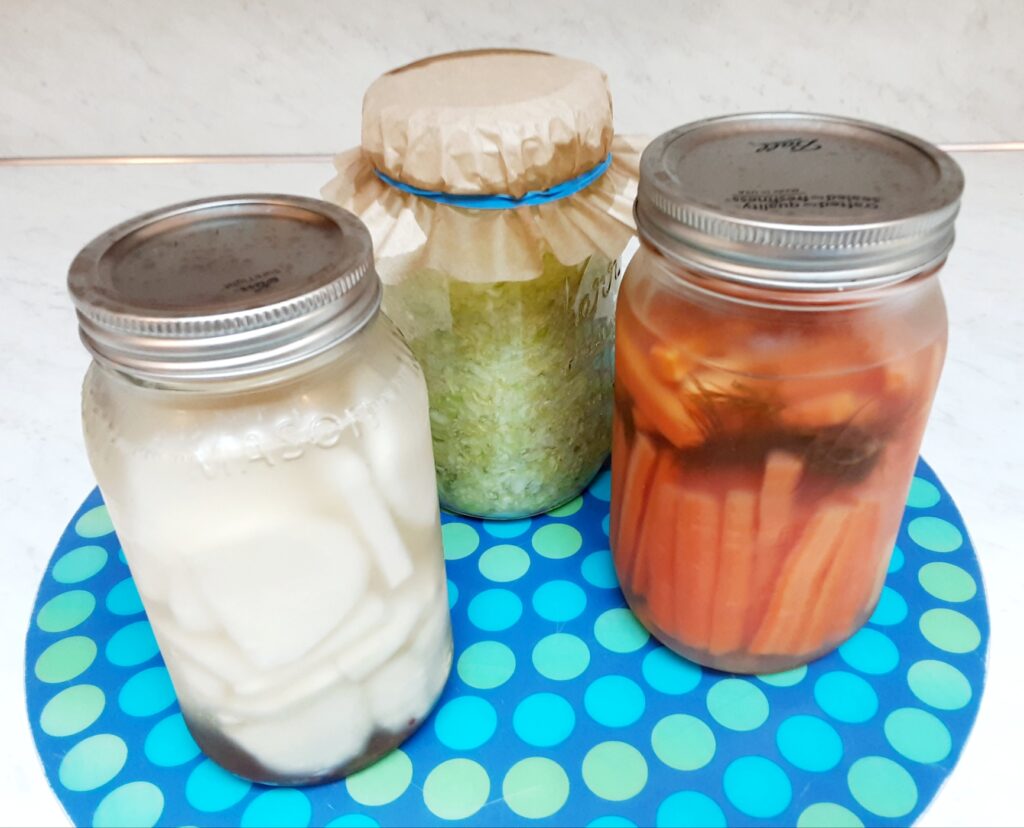Counter Cultures
I’ve never done home canning. I think it would be fun, if I had a bumper crop of something, to preserve it down cellar. But, there’s an even more venerable practice that I’ve had pretty good success with: lacto-fermentation. This is a way to take smaller batches of precious, fresh, organic veggies and preserve them for several months and boost their nutritive value even higher. No special equipment or ingredients are needed. Cultures For Health is a great resource. In the past month I made dill-garlic carrots, kohlrabi pickles, and sauerkraut.

So, you might be wondering, how do they taste? Singular! It’s not your grocery store pickles. But, you use them as you would pickles or relish, as a garnish or accent to your cooked or raw main dish. They are pungent and quite salty, so a little goes a long way. The liquid can be used as a base for salad dressing, stirred into a bowl of something savory to add seasoning and probiotics, or even as a starter culture for your next batch.
The ideal temperature for lacto-fermentation is between 60-70 degrees. In the past, I didn’t think much about this, because I don’t have much control over the temperature in my home, especially in summer, when the fresh organic veggies are at their most abundant. This time I realized the best place to let my ferments sit would actually be my bedroom, since it is always the coldest spot in the house. It’s partially underground and has one small window that usually doesn’t get direct light. So, I felt it was feasible to let my sauerkraut ferment for 2 whole weeks, as recommended in the recipe. When I tasted it a few days ago, I was amazed at how nuanced the flavor was. Now I understand what the hype is about! I’m thrilled with my DIY sauerkraut and I’ll definitely be making it again as soon as we eat up this batch.

Leave a Reply